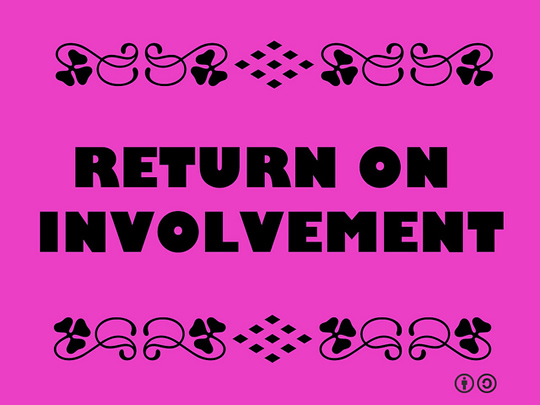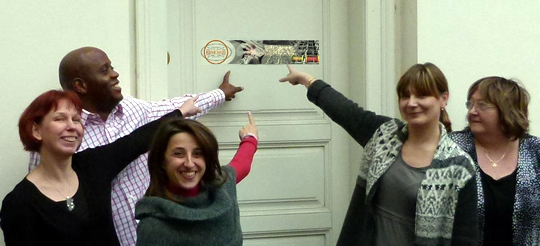
Partnerships across organisations are often the most effective way to solve complex social and global problems. However, as many project managers know, whilst managing a team of individuals from one organisation can be a challenge in itself, bringing together a team across multiple organisations across different countries and cultures brings an extra level of complications and demands.
The ultimate benefit of working with multi skilled and multi disciplinary teams more often than not outweighs the difficulties encountered, as they are the only way that complex problems can be resolved. This is recognised in the ever-increasing number of business initiatives, both government and private that are being launched with international partnerships and collaboration at their heart.
Salford Business School is one such organisation that has benefited substantially from international project collaborations. Most notable are the European teams, which attract funding from the European Commission. Some of the challenges addressed by these projects include – Enterprise Cultural Heritage Management, Employability: Learning through International Entrepreneurship, Business Culture guides in 31 European countries, Innovation policy in University City Regions and Joint European Masters in Digital and Social Media Marketing.
So, what lessons can be derived from partnership management? Here are five key ingredients based on my experience as Enterprise Development Manager (European Projects Manager) at Salford Business School:
1. Partnership agreement
If you’re looking for a collaboration partner, particularly from another country, several issues need to be considered. Primarily, define and prioritise for yourself from the outset what is required from the partnership – expertise specific to the project, project management experiences, access to networks, financial resources etc.
Secondly, it is important to consider and establish what kind of organisation you are looking for. This could be based on the size of the potential partner’s establishment and this factor brings flexibility or stability to your collaboration. Generally, universities tend to be more stable than small and medium sized enterprises (SMEs), but have heavy processes and systems, which might slow down your progress. Small commercial companies, on the other hand, tend to be more flexible and responsive to the needs of the project but can be susceptible to issues with commercial priorities, where resources can be diverted to other more urgent activities. Employing a mixed approach, where you work with different sizes and types of organisation during the project can create mismatches and highlight cultural differences, which can be desirable but may also have drawbacks.
When planning a partnership, prepare a clear written brief of the project and an introduction to your organisation and team. This brief should set out your expectations to your potential partner and offer clear timelines and deadlines, keeping your partners well informed and updated on all developments.
In certain countries you might not be able to approach the relevant person immediately. For example, when developing a partnership with French organisations it is important to observe a hierarchical business culture where first interactions should be agreed at senior management level before operational level work can commence.
Conversely, in countries such as the UK the approach could be different and you could speak to the individuals directly and get their agreement first. Usually, British organisations will gain approval from their management once the details of the project have been established and due diligence exercised.
2. Partnership management
Partnership management begins long before a project starts. There are a number of factors that should be established upfront, in order to avoid potential problems further down the line. The first step as mentioned above is to set out a partnership agreement that outlines succinctly what the project intends to achieve and what the expectations are from each partner involved.
3. Involvement from the outset
Buzzword Bingo: Return on Involvement (ROI) (CC) by Ron Mader
There are a number of different philosophies around consulting each partner at the outset of the project or just developing the project plan first and then asking partners to sign up to what has already been decided. Experience suggests that whilst a clear vision of the project is needed it is also essential that all partners feel that they are an equal and important part of the project and therefore have a chance to contribute to and amend the plan to accommodate their needs.
Ensuring consensus between all stakeholders and offering everyone an equal opportunity to contribute at the outset of your project proposal is essential. Most importantly this also offers an insight into how you might work during the project once it is in operation. If you encounter doubts and difficulties with a partner during project development negotiation stage, chances are that these will persist when it comes to delivering the work. Although there is no guarantee that the individuals who carry out the delivery of the project will be those who were involved in its preparation – it gives everyone a chance to evaluate if joint collaboration could be possible. It is often the case particularly in larger organisations that their team will evolve, whereas smaller organisations tend to have same members who prepare and deliver the project.
4. Expectations
Ensure that you have an honest conversation with your potential partner and set everyone’s expectations from the outset because misunderstandings at this stage can lead to multiple problems later.
5. Establish leadership, roles and responsibilities for each partner early on
Leading an international project, which involves members that might have different roles within their own organisations can be a challenge. One of the differences in Europe is that most organisations tend to choose a very clear hierarchical structure where decisions are made by an autocratic leader, and others then work to implement these. By contrast there is also a more democratic approach to leadership where every member is able to contribute to a decision making process before it is committed to by the entire team. Both systems have their advantages and disadvantages; for example the democratic model could reach a state of paralysis by analysis and discussions whereas the autocratic model could miss the knowledge and skills gained by consulting the entire team.
The model that worked best for the Salford lead project tended to use the distributed leadership approach. Whilst the projects had an overall leader, the whole project was broken down into distinct work objectives and related work packages. The benefit of this approach is that each work package was led by an expert in that field and thus they were responsible for finding the most effective and efficient way to address the work that was needed. This meant that each project partner was responsible for leading a certain set of tasks and therefore was able to contribute to the overall running of the project.
6. Communication
Working with people across different time zones, organisations, cultures and countries as well as languages brings a range of challenges. Whilst all our projects are led in English, for most partners this is often their second or third language. Therefore, regular clear verbal communication, which is followed up with written notes, is crucial.
Technological advances that have provided tools such as Skype and Google Hangout offer a cost effective communication platforms. From our projects’ experience, monthly conference calls that are used to review work done and plan next steps are essential.
Regular contact will ensure that the key contacts within your partnership organisations are kept informed on a regular basis so that any potential misunderstandings are clarified and rectified.
Bilateral calls and discussions between project management and individual partners are also important and encouraged to avoid partners waiting unnecessarily and delaying delivery of the work. This could be done via email or by the conferencing tools mentioned above.
7. Plan carefully
Final project meeting – Enterprise Cultural Heritage Team meeting
Once you have agreed your project aims and objectives, establishing key milestones and deadlines for each partner is of crucial importance. It is advisable to draw up written agreements to ensure everyone is clear about what deadlines are in place and how these will be met.
And plan again
Timelines are invaluable in ensuring each partner knows what they are doing and when. A detailed plan will allow you to manage the process effectively. Ensure that responsibility for each step has been assigned to someone in the partnership.
Be flexible
Try to stand by your aims, objectives and deadlines but keep in mind the need to remain as flexible as possible! Something unforeseen always occurs so be prepared to make changes as the project goes on.
Where there is a will there is a way – as can be seen by this plant growing against the odds
Do you have other points that you think should be shared with others embarking on an international collaboration? If so, we invite you to share your experience below.







